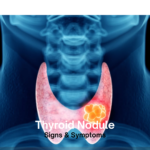Understanding Polydipsia: The Thirst That Won’t Quit
Polydipsia is a medical condition characterized by excessive thirst and fluid intake. This unquenchable thirst can be a symptom of various underlying health issues, making it a significant concern for both patients and healthcare providers. Understanding the causes, symptoms, and management of polydipsia is crucial for effective treatment and improving the quality of life for those affected.
What is Polydipsia?
Polydipsia comes from the Greek words “poly” meaning “many” and “dipsia” meaning “thirst.” It is defined as an abnormally high intake of fluids, often exceeding 3 liters per day. While everyone experiences thirst, polydipsia goes beyond the normal desire for water, persisting even after drinking large amounts.
Causes of Polydipsia
Polydipsia can be categorized into two types: primary and secondary.
Primary Polydipsia
Primary polydipsia, also known as psychogenic polydipsia, is usually related to psychological conditions. People with this type of polydipsia have an overwhelming urge to drink fluids, often due to stress, anxiety, or psychiatric disorders such as schizophrenia. In these cases, the excessive thirst is not triggered by a physiological need but by a psychological drive.
Secondary Polydipsia
Secondary polydipsia is more common and results from physiological conditions. The primary causes include:
- Diabetes Mellitus: One of the most common causes of polydipsia. In uncontrolled diabetes, high blood sugar levels lead to increased urination (polyuria), which depletes the body’s water, triggering excessive thirst.
- Diabetes Insipidus: This rare condition occurs when the body cannot properly balance fluid levels. It is caused by a deficiency of antidiuretic hormone (ADH) or the kidneys’ inability to respond to ADH, leading to large volumes of dilute urine and subsequent thirst.
- Electrolyte Imbalances: Conditions such as hypercalcemia (high calcium levels) or hypokalemia (low potassium levels) can disturb the body’s fluid balance, causing increased thirst.
- Medications: Certain drugs, including diuretics, antipsychotics, and some antihistamines, can cause increased thirst as a side effect.
- Renal Conditions: Kidney diseases can impair the kidneys’ ability to concentrate urine, leading to polyuria and polydipsia.
- Dehydration: Severe dehydration from vomiting, diarrhea, or excessive sweating can lead to intense thirst as the body attempts to replenish lost fluids.
Symptoms and Diagnosis
The primary symptom of polydipsia is excessive thirst, which leads to the consumption of large amounts of fluids. This is often accompanied by frequent urination, particularly if the underlying cause is diabetes mellitus or insipidus.
To diagnose polydipsia, healthcare providers will conduct a thorough medical history and physical examination. Key diagnostic steps include:
- Medical History: Assessing the patient’s fluid intake, urination frequency, and any associated symptoms such as fatigue, weight loss, or changes in appetite.
- Blood Tests: Measuring blood glucose levels, electrolytes, and kidney function to identify potential underlying causes such as diabetes or electrolyte imbalances.
- Urine Tests: Analyzing urine for glucose, ketones, and osmolality can help determine if diabetes or diabetes insipidus is present.
- Water Deprivation Test: In cases where diabetes insipidus is suspected, a water deprivation test may be performed to assess the body’s ability to concentrate urine in response to fluid restriction.
- Psychiatric Evaluation: If psychogenic polydipsia is suspected, a psychiatric assessment may be necessary to identify any underlying mental health conditions.
Complications
If left untreated, polydipsia can lead to serious complications, including:
- Hyponatremia: Excessive fluid intake can dilute the sodium levels in the blood, leading to a dangerous condition called hyponatremia. Symptoms include headache, nausea, confusion, seizures, and in severe cases, coma or death.
- Kidney Damage: Chronic excessive fluid intake can strain the kidneys, potentially leading to long-term kidney damage.
- Impact on Daily Life: Constant thirst and frequent urination can significantly affect a person’s quality of life, disrupting sleep, work, and social activities.
Treatment and Management
The treatment of polydipsia depends on the underlying cause. Managing the root condition is essential to alleviating excessive thirst.
Diabetes Management
For diabetes mellitus, controlling blood sugar levels is crucial. This may involve:
- Medication: Insulin or oral hypoglycemic agents to maintain blood sugar levels within a normal range.
- Diet and Exercise: A healthy diet and regular physical activity to help control blood sugar levels.
- Monitoring: Regular blood glucose monitoring to track and manage levels effectively.
Diabetes Insipidus Management
Treatment for diabetes insipidus focuses on replacing ADH or managing the kidneys’ response to ADH:
- Desmopressin: A synthetic form of ADH can be administered to reduce urine production.
- Hydration: Ensuring adequate fluid intake to prevent dehydration.
Managing Psychogenic Polydipsia
For psychogenic polydipsia, a multidisciplinary approach is often required:
- Psychotherapy: Cognitive-behavioral therapy (CBT) can help address the underlying psychological factors contributing to excessive thirst.
- Medication: Antipsychotic or anxiolytic medications may be prescribed to manage underlying psychiatric conditions.
- Behavioral Strategies: Encouraging controlled fluid intake and monitoring urine output can help manage symptoms.
Addressing Electrolyte Imbalances
Treating underlying electrolyte imbalances involves:
- Correction of Electrolyte Levels: Administering appropriate supplements or medications to normalize electrolyte levels.
- Monitoring and Adjusting Medication: Reviewing and adjusting any medications that may be contributing to the imbalance.
Lifestyle Modifications
In addition to medical treatment, certain lifestyle modifications can help manage polydipsia:
- Fluid Management: Monitoring and regulating fluid intake to prevent excessive consumption.
- Healthy Diet: Maintaining a balanced diet rich in essential nutrients to support overall health.
- Regular Exercise: Engaging in physical activity to help manage underlying conditions such as diabetes.
Conclusion
Polydipsia is a symptom that can significantly impact a person’s quality of life. Understanding the underlying causes, symptoms, and treatment options is essential for effective management. By addressing the root causes and making necessary lifestyle adjustments, individuals with polydipsia can achieve better health outcomes and improved well-being. If you or someone you know is experiencing excessive thirst, it is important to seek medical advice to determine the cause and appropriate treatment.





